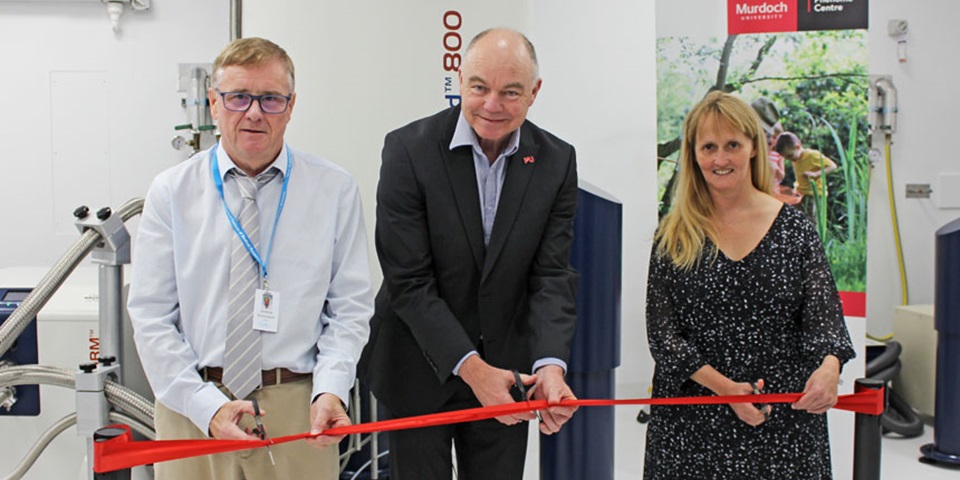News
Murdoch University commissions new world class facility to unravel origins of complex disease

The ANPC is continuing its commitment to better understand complex disease with the installation of an ultra-high Field Nuclear Magnetic Resonance (NMR) spectrometer at the Harry Perkins Institute of Medical Research.
This new instrument – the most advanced of its type in Australia and the only one in Western Australia – completes the full package of Bruker NMR instruments housed at the Australian National Phenome Centre (ANPC).
It is a high-powered addition to the ANPC’s capabilities in performing complex chemical and physical measurements used in the detection of a range of diseases, including COVID-19, diabetes, cardiovascular disease, dementia, and other metabolic conditions.
Murdoch University Vice Chancellor Professor Andrew Deeks, who helped cut the ribbon on the new NMR at a formal ceremony today, said the ANPC was a world leader in metabolic phenotyping and uses the latest spectroscopic technologies to unlock the molecular, environmental and lifestyle factors in disease development.
He said it would help support research into new drug therapies and the development of personalised dietary interventions for individuals, based on nutritional biomarkers.
Dr Samantha Lodge, Head of the ANPC’s Magnetic Resonance Laboratory, said the new instrument would further strengthen the ANPC’s capabilities to study mechanisms of major diseases, attract new research funding and lure high-quality NMR scientists from around the globe.
“The ultra-high Field NMR capability is designed to support leading researchers in discovery-led research in health, disease profiling, nutrition and the environment,” Dr Lodge said.
The new 800 MHz instrument, together with our current NMR instrumentation devoted to biomedical studies, will give the ANPC the highest NMR-based biochemical data acquisition capability in the world.”
ANPC Director Professor Jeremy Nicholson said the new instrument would allow researchers to delve deeper into the molecular complexity and dynamics of biofluid and solid samples, enabling the development of new types of disease diagnostics.
This instrument will assist Australian research by determining:
- The molecular structure of novel disease markers in humans and animals.
- Natural product bioprospecting in WA.
- Discovery of new molecular species with pharmacological activity and drug potential.
- Structural dynamics of drug-receptor and drug binding interactions.
- Nutritional biomarkers that are relevant to personalised dietary interventions and clinical trials.
The investment in high-field NMRs supports Australian scientists in an emerging area of research strength, ensuring they are provided with leading edge equipment and technologies to collaborate internationally and tackle global challenges in health, nutrition and preventative medicine.
Background
- High-field NMR spectroscopy leads to the development of novel experiments that exploit motional and binding properties exhibited by molecules at these high fields.
- The outputs of this NMR will augment the existing NMR instruments and positions the ANPC to have the largest cluster of NMR instrumentation in the Southern Hemisphere.
- Coupled with its extensive mass spectrometry instrumentation, the ANPC is now the best-equipped metabolic research laboratory in the world.